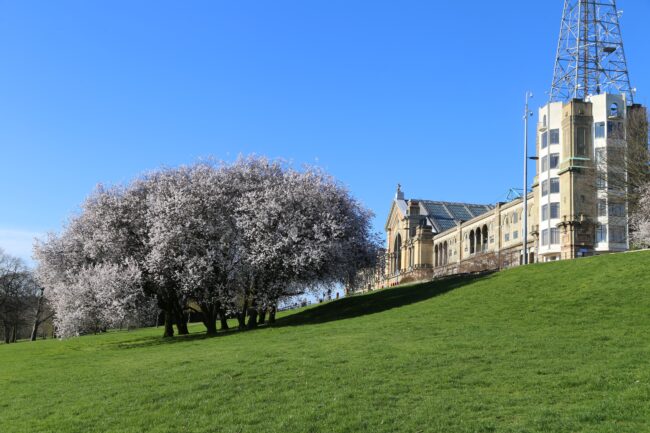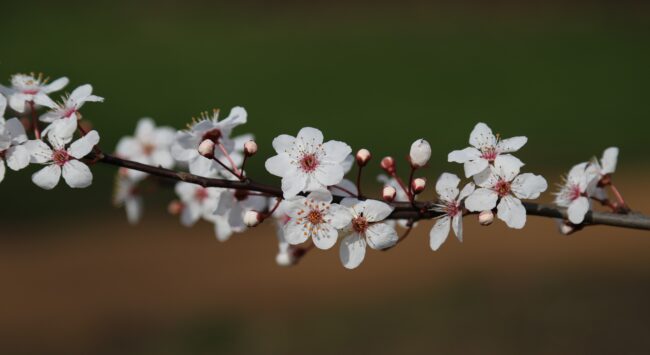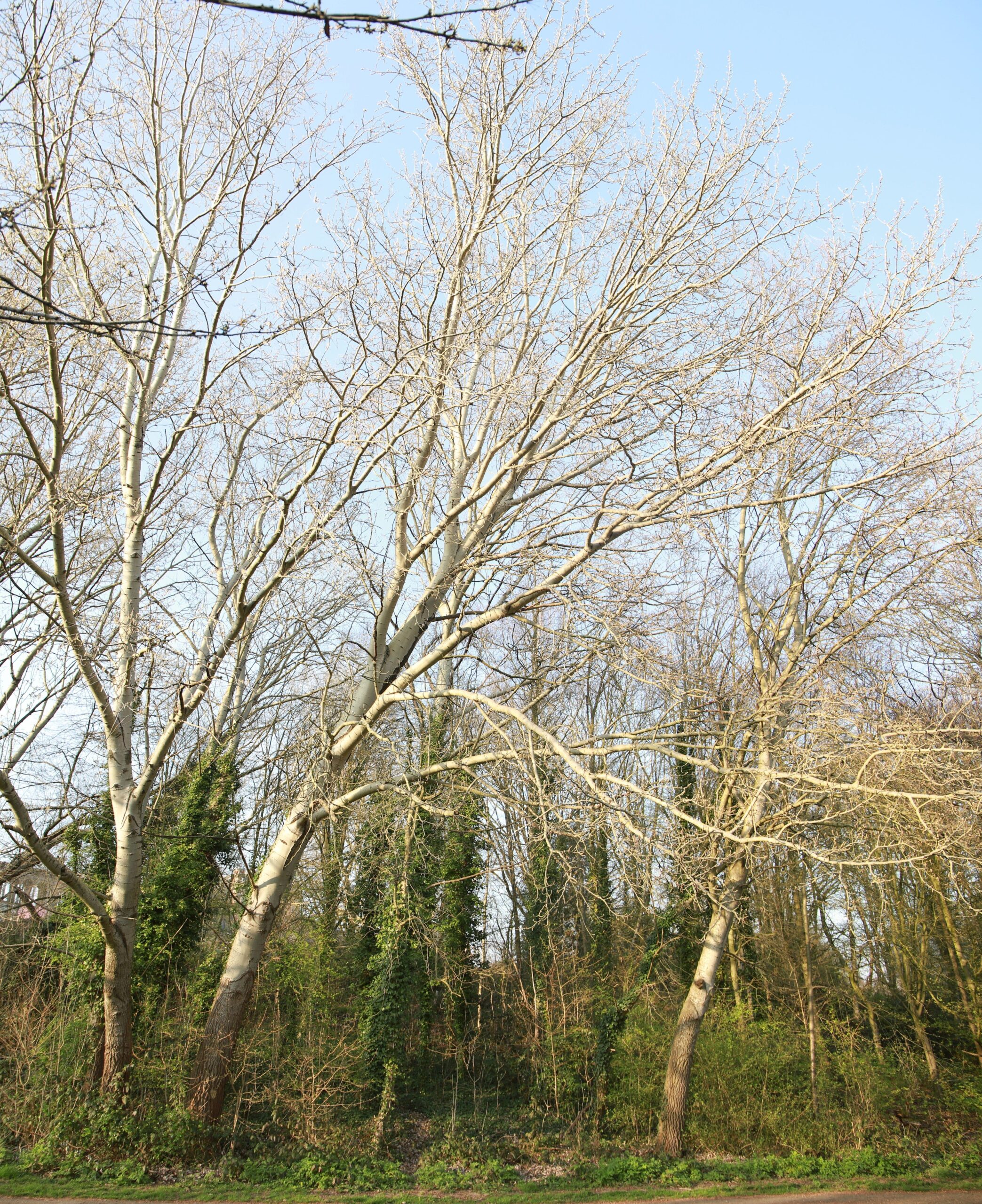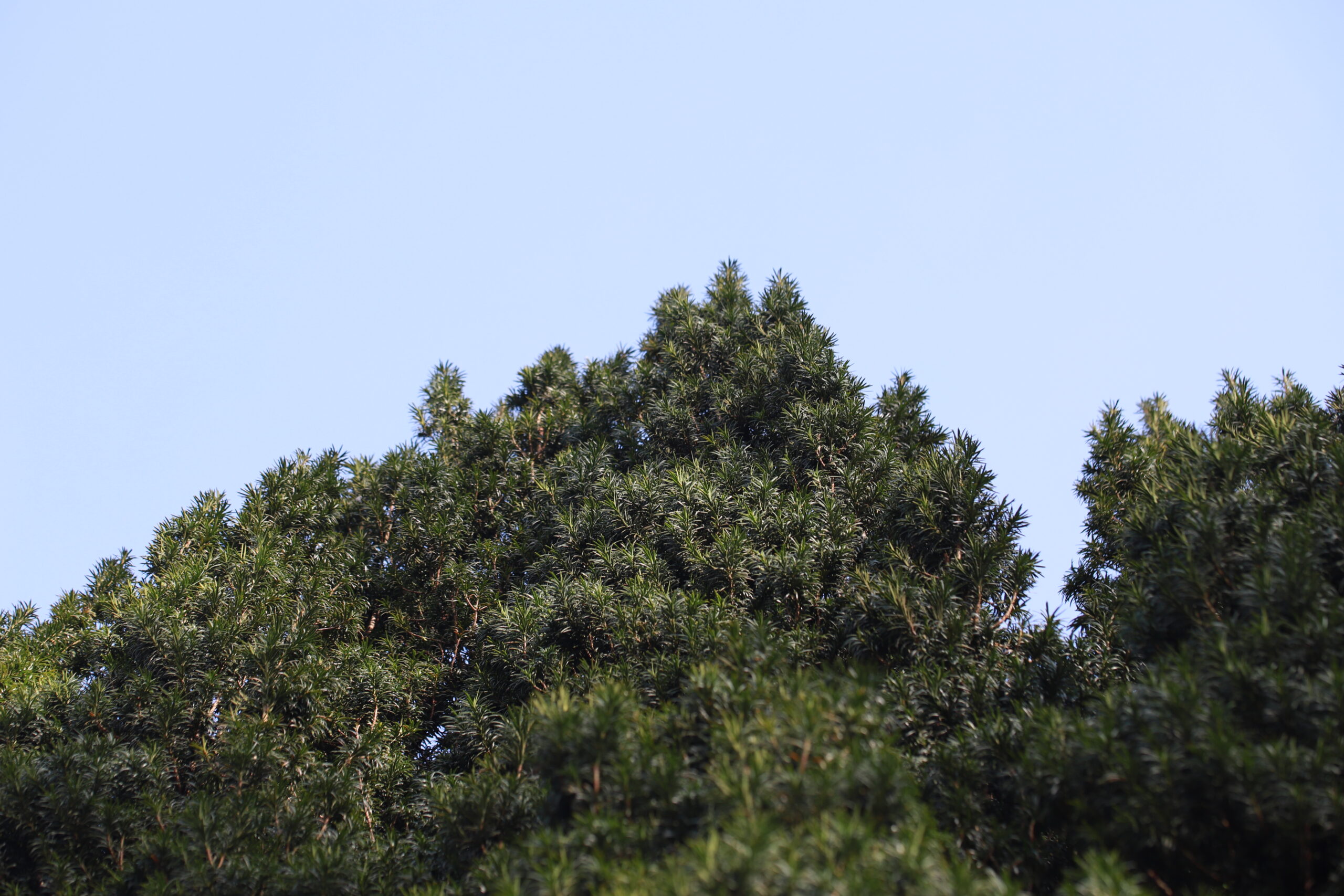Next time you are visiting, see if you can spot our February tree of the month, as described by Stephen Middleton from the Friends of Alexandra Park…
Witches dancing on the South Slope just below the BBC Tower. That is one impression of our Tree of the Month, the Cherry Plum (Prunus cerasifera ‘Pissardii’). The ring of trees erupts into flower this month with white or very pale pink cherry-like flowers with purple leaves. The group always looks dramatic even in winter when their stark shapes stand out. You can easily imagine that a group of witches were dancing and then frozen into trees.

The wild form of our tree of the month is the cherry plum or myrobalan plum and comes from Western Asia and Southeast Europe although it can now be found growing in the wider countryside as well some examples in our park. These wild varieties look very similar to our trees, but have green leaves. Purple-leaved plum and Pissard’s plum are a couple of the other names for our popular cultivar which has much darker leaves setting off the flowers dramatically.
By flowering so early in the year, the purple-leaved plum is a real harbinger of spring and is often mistaken for the blackthorn. Cherry plums come out slightly earlier and the new growth of the twigs is green as opposed to a dark colour in the blackthorn. Also the leaves come out alongside the flowers whereas in blackthorn the white flowers appear before the first leaves.
The fruit from cherry plums is edible and can be used to make jam, but normally the crop is very small.

What’s in a name? The scientific name Prunus covers both cherries and plums as well as almonds, apricots and peaches. Cerasifera means wild cherry – cerasi is latin for cherry and fera – think of the word “feral”. Finally Ernest Francois Pissard was a French gardener to the Shah of Persia responsible for the creation of this particular cultivar.
Pissards plums can also be found just below our group by the entrance to the Pitch and Putt, yet more to the left of the Rose Garden as you approach it from the Palace and many can be seen in the easternmost of the old deer enclosures.
There is another form of this plum to be often found in our local streets Prunus cerasifera ‘Nigra’ which has pink flowers instead of white. You have to look closely at the trees as our white form can often look pink from a distance due to the colour of its leaves. Both types help bring welcome early spring colour to the area.





